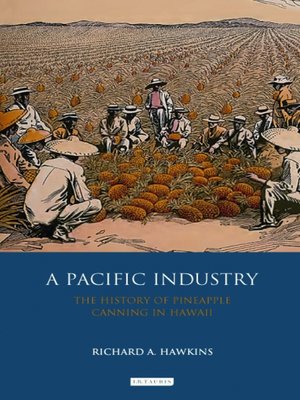
Sign up to save your library
With an OverDrive account, you can save your favorite libraries for at-a-glance information about availability. Find out more about OverDrive accounts.
Find this title in Libby, the library reading app by OverDrive.



Search for a digital library with this title
Title found at these libraries:
| Loading... |
The Hawaiian pineapple industry emerged in the late nineteenth century as part of an attempt to diversify the Hawaiian economy from dependence on sugar cane as its only staple industry. Here, Economic historian Richard Hawkins presents a definitive history of an industry from its modest beginnings to its emergence as a major contributor to the American industrial narrative. He traces the rise and fall of the corporate giants who dominated the global canning world for much of the twentieth century. The pineapple canning industry might never have achieved commercial success if James D. Dole had not moved to Hawaii in 1899. While other pioneers of the industry had overcome the initial difficulties of exporting perishable goods to the West coast, it was Dole who, in the decade before World War I, realised that the industry's commercial viability hinged on the success of mass marketing campaigns in the continental US. This led to the endtry into the industry of two major continental American canning companies, Libby, McNeill & Libby and the California Packing Corporation. By the interwar years pinappels had become a major Hawaiian industry and easily fought off foreign competition by charging a premium for 'quality'. However, the industry began to experience problems acquiring land for further expansion and explored the possibilities of production outside of Hawaii, both in the Pacific region and elsewhere in the world. A rise in labour costs in Hawaii after the end of World War II led to major investments in production outside the islands. The major canners in Hawaii had effectively created their own foreign competition in the continental American market. By the 1980s, Hawaiian canned pineapple had lost its price premium and, as a result, Hawaii mostly switched to the production of premium fresh pineapples - which also then lost their price premium by the end of the twentieth century. At the end of the first decade of the twenty-first century, only Dole was still producing pineapples for the American fresh fruit market. From early on, the Hawaiian pineapple canning industry operated as an oligopoly dominated by a handful of major canners. Drawing from a host of familiar economic models and an unparalleled body of research, 'A Pacific Industry' offers rare insight into the precarious beginnings of an American business that would grow to extend far beyond the shores of Honolulu.






